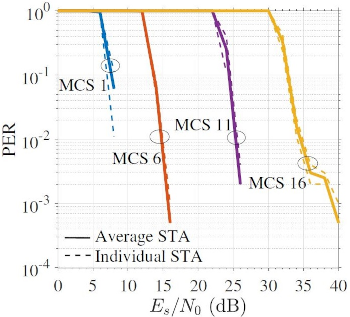
On September 22th, 2021, NIST released its Matlab implementation of the IEEE 802.11ay Enhanced Directional Multi-Gigabit (EDMG) Physical Layer. It is available for public download here. This model is part of the NIST Quasi-Deterministic (Q-D) Framework and tool suite available on Github here. The NIST Q-D framework (starred 85 times and forked 50 times) aims at providing researcher a high-fidelity tool suite to evaluate and gain a deeper understanding of the inter-workings of the IEEE 802.11ad/ay protocols.
Other modules part of the NIST Q-D framework include, the NIST Q-D Channel Realization Software, used to generate realistic measurements-based channel models, the ns-3 wigig module, which enables IEEE 802.11ay/ad system-level performance evaluation, and the NIST Q-D interpreter, used to visualize and interpret beamforming results in a 3D visualizer.
Physical layer is the lowest layer in the IEEE 802.11ay protocol stack, which directly handles bit-level transmission and reception over wireless channels. Thanks to the NIST measurement-based channel model, this PHY software can be used to evaluate the IEEE 802.11ay PHY performance under different channel conditions. The NIST IEEE 802.11ay EDMG Physical Layer Mode, implemented in Matlab, provides an end-to-end simulation platform, including transmitter and receiver with the following features:
- IEEE 802.11ay Single Carrier/OFDM waveform generation.
- IEEE 802.11ay spatial multiplexing schemes: SU-SISO, SU-MIMO, and MU-MIMO.
- Evaluation of link-level bit error rate, packet error rate and spectral efficiency.
- Receiver algorithms supported: synchronization, channel estimation, channel equalization, and carrier frequency offset detection and correction, among others.
The software enables the baseband link-level simulation of the IEEE 802.11ay PHY standard. In addition, it supports the system-level simulation for the IEEE 802.11ay communication systems.

